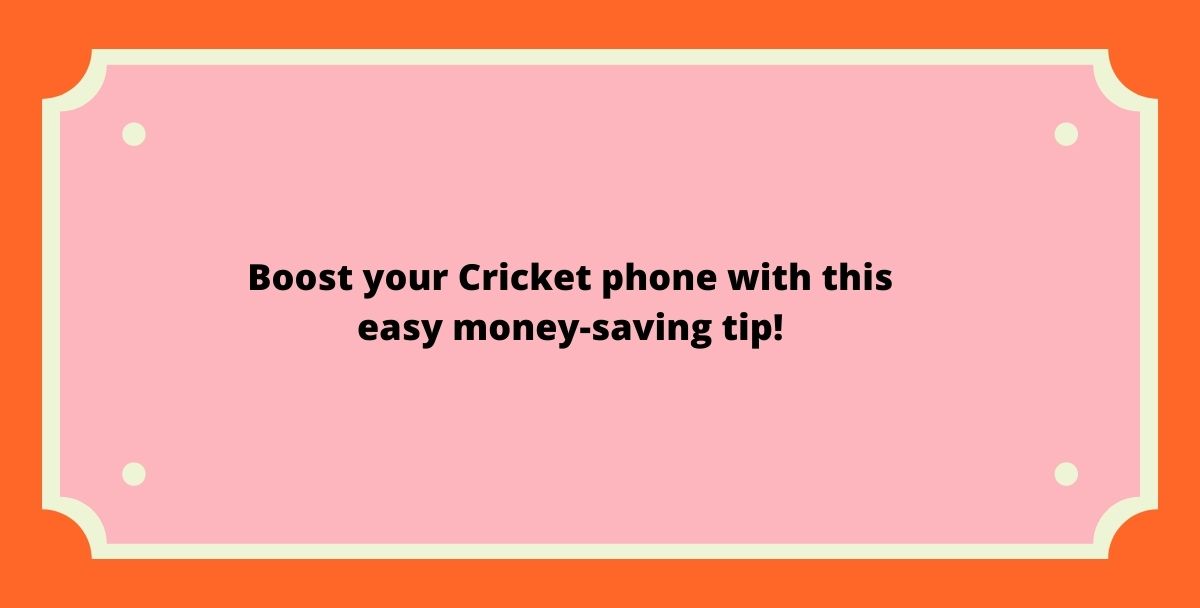Boost your Cricket phone with this easy money-saving tip!

If you hadn’t heard of Cricket, you’d be forgiven, particularly if you’re a European reader you might be forgiven. Founded in March 1999 by Leap Wireless International, Cricket’s first market was Chattanooga, Tennessee. For much of its early years, the company was known as a network focused on small, rural markets. A particularly niche business preparation, though not unheard of at the time. In 2007, before merging with T-Mobile, MetroPCS—Cricket Wireless’s competing carrier at the time—announced a bid to merge with Leap Wireless. Less than two weeks later, Leap Wireless rejected the bid, which was withdrawn less than two months later.
Despite failing to merge, in September 2008 Cricket and MetroPCS entered into a ten-year romancing agreement, protecting both companies existing and future markets. Less than a year later, Cricket helped launched a roaming with 14 wireless companies, followed by a wholesale agreement with Sprint, which allowed Cricket to utilise their nationwide 3G network. Following a foray into the music streaming industry—to varying degrees of success—in July 2013, AT&T agreed to buy Cricket Wireless’ parent for $1.2 billion. Controversially, users were later required to purchase new devices to maintain connectivity to the new Cricket network. By August 21, 2020, Cricket Wireless had deployed its 5G network nationwide, later closing down its 3G network.
In the grand scheme of things, Cricket Wireless remain a relatively small network provider. Since its acquisition in 2014, the prepaid wireless provider has doubled its subscriber base, though it remains below 10 million subscribers nationwide, a snippet of its behemoth competitors. The business has prided itself on finding innovative solutions than gain consumer trust and offer simple, smart wireless experiences. Primarily, Cricket offer easy-to-understand and affordable service plans without annual contracts. Cricket also sell top-brand mobile devices at affordable prices. Convenience notwithstanding, most of these smartphones are—as is commonplace—locked to the Cricket network. Locked devices are a pain. Whether you’re an existing customer or are left with a device following the end of a contract, locked devices cost consumers money and make smartphone use infinitely less flexible. It doesn’t have to be this way though …
How to get the most out of your Cricket smartphone
Carrier networks are not inclined to readily unlock devices. Devices locked to a carrier are more likely to remain with that carrier. While locked, another providers SIM will not work in a given smartphone. Additionally, larger carriers—the type usually offering locked devices—often offer more expensive packages than smaller, competitive SIM-only providers. This means the longer the device remains locked, the more it costs the customer. Typically, these carriers don’t make it easy to enact an unlock. Fortunately, companies like DirectUnlocks make this a whole lot easier. Once unlocked, your smartphone—new or used—is open to any carrier. Most notably, the competitive SIM-only market is your new playground. These smaller carriers have much lower overheads, meaning their package offerings are often significantly cheaper, saving you a ton of money.
But this isn’t the only way unlocking your device saves money or increases flexibility. One of the biggest costs for smartphone owners, particularly regular travels—whether business or pleasure—is roaming charges. Locked devices are often subject to pricey roaming charges. There’s often no way around this, if your locked to Cricket and you travel to the Middle East, communicating with friends back home or to continue doing business, you’ll be subject to sizeable fees. Unlocked devices negate roaming charges. Once unlocked, all travellers need to do is visit a local store, select a prepaid SIM-only package from a local provider and purchase a SIM. Once plugged into your device, you’ll be able to use the device as normal, communicating without roaming charges and making the most of apps and internet use. As if this wasn’t enough, unlocked devices are worth about 20-30% more than their locked counterparts, whether you’re selling privately or to a recycling company, you’ll find more money in your back pocket.
If you want to find out how to unlock Cricket phone then simply visit DirectUnlocks. All you need is your device IMEI. Once you plug this IMEI into the website, DirectUnlocks are able to unlock your device remotely, often within just 6 hours without need to even leave your home. So, if you have a Cricket device, make the most of it with this simple consumer trick. Previously, consumers stuck with locked devices either had to accept expensive monthly charges from large network carriers, sell their smartphone for below the market rate, or wait around in queues to unlock their devices in-store. In today’s highly competitive digital market the power is with the consumer, fiercely competitive SIM-only carriers offer low monthly rates, and the second-hand smartphone market has exploded in popularity. Online device unlocks complement this competitiveness and allow consumers to get the most out of their money.






